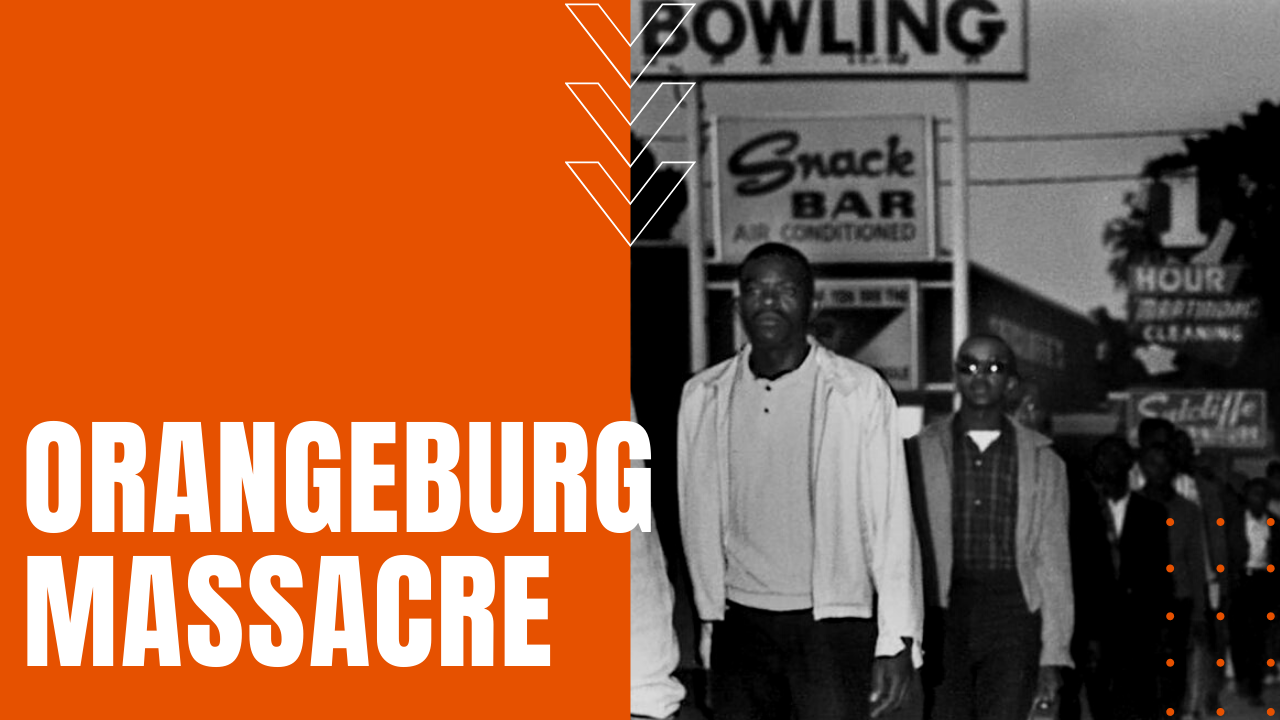Orangeburg Massacre: South Carolina’s Deadly Struggle for Civil Rights

Despite the passage of the Civil Rights Act of 1964, which banned racial segregation in the United States, not everyone, particularly in the Jim Crow South, bought into the principles of racial equality, including Orangeburg South Carolina businessman, Harry Floyd, who continued to deny blacks into his bowling alley under the wrongful belief that federal anti-segregation laws had no jurisdiction over private property.
In a town with two predominately black universities—South Carolina State and Claflin University—educated blacks appealed repeatedly for entry into Floyd’s bowling alley, who refused their advances in the name of his long-standing white clientele.
Protests Spark Fear and Fire
After students were again denied entry on February 5th, 1968, a day later, an even larger crowd arrived in protest, drawing the immediate ire of police, who beat students mercilessly with billy clubs. The night would witness fifteen student arrests, ten student injuries and one wounded police officer.
Campus outrage spread like wildfire, prompting Governor Robert McNair to call in the National Guard in advance of anticipated civil unrest by what he called “outside black militant agitators” like Cleveland Sellers, who had returned to his native South Carolina after graduating from Howard University in 1967. Commanded by police Chief Pete Strom, when an even larger protest erupted on February 8th, National Guardsmen and heavily-armed police blocked the entrance to SC State, prompting students to build a bonfire in protest of their confinement.
what was the Orangeburg Massacre?
After firemen responded to Strom’s order to extinguish the blaze, when an officer was struck by a heavy wooden banister, police opened fire on the unarmed students, creating instant pandemonium as terrorized students fled for their lives.
After the shooting was over, Freshman Sammy Hammond died from a bullet wound to his back, while 17-year-old Delano Middleton, whose mother worked on campus, passed away from seven gunshot wounds. 18-year-old Henry Smith also lost his life following three bullet wounds, while 28 others including Sellers were shot or wounded during their scramble for safety.
Media coverage remained almost nonexistent from the start, due primarily to the recent media distractions of the Tet Offensive, which was a coordinated string of North Vietnamese attacks in more than 100 South Vietnamese cities and outposts just days earlier.
No Justice for Orangeburg
Of the 70 armed police officers involved in the Orangeburg Massacre, nine were indicted but ultimately acquitted, while Sellers was convicted and sentenced to one years’ hard labor for inciting a riot, making the Orangeburg Massacre, a largely unknown and unsung tragedy in America’s slow embrace of equal rights.
